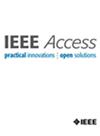EFFResNet-ViT: A Fusion-Based Convolutional and Vision Transformer Model for Explainable Medical Image Classification
IF 3.4
3区 计算机科学
Q2 COMPUTER SCIENCE, INFORMATION SYSTEMS
引用次数: 0
Abstract
The rapid advancement of medical imaging technologies requires the development of advanced, automated, and interpretable diagnostic tools for clinical decision-making. Although convolutional neural networks (CNNs) have shown significant promise in medical image analysis, they have limitations in capturing the global context and lack interpretability, thereby hindering their clinical adoption. This study presents EFFResNet-ViT, a novel hybrid deep learning (DL) model designed to address these challenges by combining EfficientNet-B0 and ResNet-50 CNN backbones with a vision transformer (ViT) module. The proposed architecture employs a feature fusion strategy to integrate the local feature extraction strengths of CNNs with the global dependency modeling capabilities of transformers. The extracted features are further refined through a post-transformer CNN and a global average pooling layer to enhance the classification performance. To improve interpretability, EFFResNet-ViT incorporates Grad-CAM visualization techniques to highlight regions contributing to classification decisions and employs t-distributed stochastic neighbor embedding for feature space analysis, providing insights into class separability. The proposed model was evaluated on two benchmark datasets: brain tumor (BT) CE-MRI for BT classification and a retinal image dataset for ophthalmological diagnosis. EFFResNet-ViT achieved state-of-the-art performance, with accuracies of 99.31% and 92.54% on the BT CE-MRI and retinal datasets, respectively. Comparative analyses demonstrate the superior classification performance and interpretability of EFFResNet-ViT over existing ViT and CNN-based hybrid models. The explainable design of EFFResNet-ViT addresses the critical need for transparency in artificial intelligence-driven medical diagnostics, facilitating its potential integration into clinical workflows to improve decision-making and patient outcomes.求助全文
约1分钟内获得全文
求助全文
来源期刊

IEEE Access
COMPUTER SCIENCE, INFORMATION SYSTEMSENGIN-ENGINEERING, ELECTRICAL & ELECTRONIC
CiteScore
9.80
自引率
7.70%
发文量
6673
审稿时长
6 weeks
期刊介绍:
IEEE Access® is a multidisciplinary, open access (OA), applications-oriented, all-electronic archival journal that continuously presents the results of original research or development across all of IEEE''s fields of interest.
IEEE Access will publish articles that are of high interest to readers, original, technically correct, and clearly presented. Supported by author publication charges (APC), its hallmarks are a rapid peer review and publication process with open access to all readers. Unlike IEEE''s traditional Transactions or Journals, reviews are "binary", in that reviewers will either Accept or Reject an article in the form it is submitted in order to achieve rapid turnaround. Especially encouraged are submissions on:
Multidisciplinary topics, or applications-oriented articles and negative results that do not fit within the scope of IEEE''s traditional journals.
Practical articles discussing new experiments or measurement techniques, interesting solutions to engineering.
Development of new or improved fabrication or manufacturing techniques.
Reviews or survey articles of new or evolving fields oriented to assist others in understanding the new area.
 求助内容:
求助内容: 应助结果提醒方式:
应助结果提醒方式:


